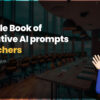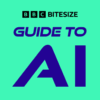
Welcome to Day 21 of #Appvent22
I can’t believe how time has flown with so many great tools shared. One of my favourite things about the series is the opportunity to not just find out new ways of exploring tools we already knew about but also discover new tools we didn’t know existed. Today’s entry from Michael Drezek is one such example. Check out Elementari!
How might I use it in my classroom?
Write. Create. Code. Remix. Share. If any of these are of interest to you or your students, Elementari is a tool you’ll want to explore. Elementari is a K-12 online platform to read, write, code, share, and remix interactive stories using professional illustrations and sounds. At first glance, Elementari comes across as a simple web-based tool for creating digital stories in a presentation style format similar to Google Slides or Microsoft PowerPoint.
But there are so many more possibilities to empower students as creators with this tool. You can bring digital stories to life with code, making them interactive and these can range from simple for elementary students or more complex for middle and high school students. Elementari promotes arts, literacy, and computational thinking in an engaging and collaborative way. It is designed for anyone at any age to use with success.
Elementari is a great tool to get students to show what they know in a creative way. If you browse the stories section of the website you’ll even find that some students have published stories that function like interactive games and digital escape room-type works. If you are not exactly sure where to start and looking for some lesson plans to get started.
Elementari offers ready-to-use lessons for the following:
Grades 2-3: Reading fables for meaning
Grades 2-4: Writing dialogue and narration for a fable (paragraph), Writing dialogue and narration for a fable (comic), Adding voice acting to a fable,
Grades 2-5: Functions in sequence, What is a function?, What is a loop?, Functions in sequence and parallel, About Me Book, What is creative coding?, Animated Holiday Card, What is an event?, Animate Your Name, Functions in parallel, Build Your Band
Grades 5-8: Create your own multiple choice quiz (part 1),
Grades 5-12: What is visual coding?, 2 Truths & 1 Lie, Coding a countdown timer,
Explore these at https://elementari.com/curriculums.
If one were to ask, what can Elementari do? I would look at it from the perspective of what can’t Elementari do?! Check out these features: https://elementari.com/features.
It is also web-based, so there is nothing to install and it works across almost any device.
Is it free?
Elementari is free with the ability to upgrade to a paid subscription that includes additional content and features. The free version does allow a teacher to create an account with access for 1 classroom of up to 35 students allowing unlimited stories and access to the free illustrations and sounds library.
Learn more here: https://elementari.com/plans
US-based educators can also request a free upgrade to the Educator Plan through the grant Storytelling through Coding Grant. Just fill out the embedded google form on the Storytelling through Coding – Getting Started course at the Pathfinders Online Institute.
I really appreciate that they offer a potential teacher reimbursement for educators that purchase this resource out of their own pocket. The Teacher Reimbursement Program’s mission is for all students in a school to have equitable access to write and code stories in school and at home. Elementari feels teachers shouldn’t have to purchase Elementari on their own and will reimburse any teacher 100% of their individual purchase if their school or district subscribes in the future. Simply contact them and they will reimburse you after your school or district joins. This way teachers get money back in their pockets, schools get access for more students, and Elementari gets to use the funds to develop more and profit share with their artists. Hopefully a win for everyone.
What type of coding will students experience?
If students choose to code their stories or creations, visual, node-based programming is used. For those unfamiliar with this type of coding/programming, it is the same style of programming used in Unreal Engine and to develop some of the world’s popular video games.
Do students need coding experience to find success?
The visual scripting really makes it easier for beginners because items are colour coded to give hints as to what nodes connect. There are also tutorial videos with each block that provide examples. Educators can even start their students off using Elementari to create something simple without any coding to start. Static and non-interactive stories are sometimes a nice way to get a feel for the tool. It won’t be long until students get curious about that Event Graph button at the top centre of their screen and want to do more and make their creations interactive. This opens up a world of possibilities.
Meaningful Digital Citizenship
As you browse stories from other creators, you will find comments and also the ability to remix the work of others. This provides a great opportunity for students to practice digital citizenship. They can follow creators, like stories, and remix stories and projects while giving credit to the original creator(s). Because artists of illustrations and sounds inside of Elementari are automatically credited in the credits of a published story, it helps lead to a conversation about copyright and creative commons.
What about collaboration
This is one of my favourite aspects of Elementari. Students can now join forces and create, together! Just like collaborative files in Google Drive or Microsoft OneDrive, Elementari allows people to collaborate in real time. In one story, I was able to work with a few other educators on this project: https://elementari.com/stories/T5F958vykh. I love how we can see comments from others, and how many people remixed the project to try to create something similar and/or examine our code.
A place for creators of art, not just creators of stories!
Do you have some budding student artists, do you like to create art and illustrations of your own? Elementari allows for creators to submit their work to be used in stories and to inspire others. Check out the possibilities at https://elementari.com/artists.
Beyond the platform…
Elementari does a wonderful job of creating experiential learning for students by offering virtual field trips. Our students at Lake Shore did just this. It was a great way for them to connect with the creator of Elementari, ask questions, and get inspired to create and code. Check out one of our past Elementari Virtual Field Trips here:
Live now for a virtual field trip with @nikorawrs & @vr2ltch & @AJLibraryMsWing to build on #CSedWeek2020. #edtechLSC #digcitLSC NY x CT x 🇫🇷 = 💻❤️ pic.twitter.com/ATQX29Ycdx
— Michael Drezek (@m_drez) December 15, 2020
What was great about this experience is that we were able to connect with another classroom in the same session and exchange animated holiday cards made with Elementari.
Elementari also runs various classroom contests to level up the creation and engagement. Check out their current student art contest with some fun prizes:
To sum up
All in all, as a district technology integration specialist, Elementari will always remain one of my go-to creation tools when teachers are looking to engage and empower their learners. The ability for coding to be integrated into any core curriculum subject in this way is just too good to pass up. To learn more about Elementari, check out their website https://elementari.com or follow them on their social media
channels https://twitter.com/elementari, https://www.facebook.com/elementariapp, https://www.youtube.com/@elementariapp, for all the latest news.
















